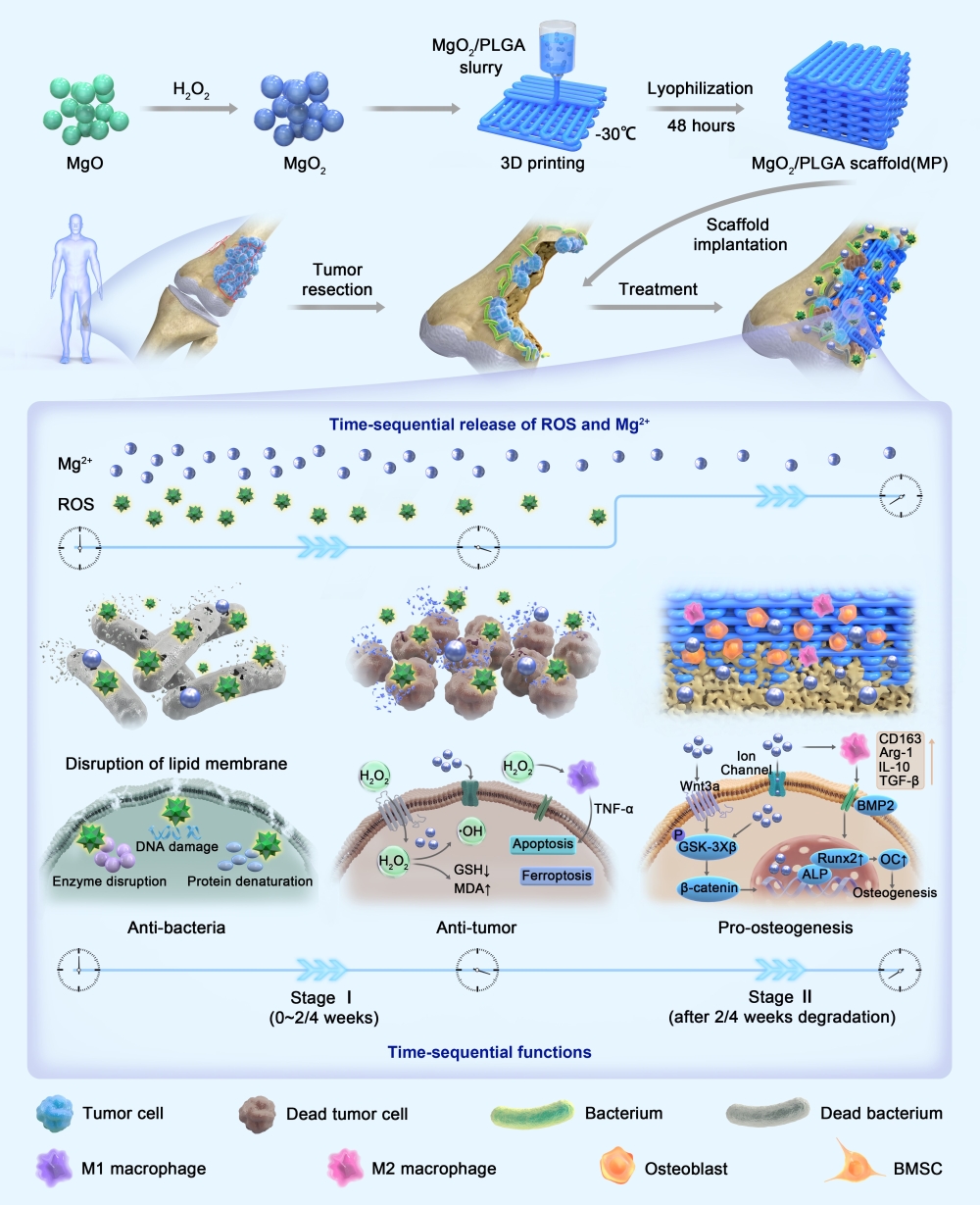Time-Sequential and Multi-Functional 3D Printed Scaffold Provides Strategies for Postsurgical Osteosarcoma Treatment
Date:04-02-2024 | 【Print】 【close】
Osteosarcoma (OS) is a primary bone malignant tumor. The current clinical standard treatment for OS comprises a combination of neoadjuvant chemotherapy and surgical resection. However, the clinical postsurgical treatment faces challenges in the staged therapeutic requirements of early anti-tumor, anti-bacterial, and long-lasting osteogenesis.
Recently, a research team led by Prof. LAI Yuxiao and Prof. QIN Ling from the Shenzhen Institute of Advanced Technology (SIAT) of the Chinese Academy of Sciences has developed multi-functional bioactive scaffolds with time-sequential functions of preventing tumor recurrence, inhibiting bacterial infection, and promoting bone defect repair.
This study was published in Advanced Materials on Dec. 13, 2023.
In this study, researchers designed MgO2 as the multi-functional component to fabricate polymeric composite bone scaffolds as the depot of H2O2 and Mg2+. To realize the sequential release of H2O2 and Mg2+ to exert multiple functions, low-temperature rapid prototyping (LT-RP) 3D printing technology was employed to fabricate MgO2-embedded poly (lactide-co-glycolide) (MgO2/PLGA) composite scaffolds with hierarchical pore structures.
The researchers founded that MgO2/PLGA scaffolds with 20 wt% MgO2 (20MP) has desired mechanical properties, as well as exhibits staged release behavior of bioactive elements with hydrogen peroxide (H2O2) release for the first 3 weeks, and long-lasting Mg2+ release for 12 weeks.
The 20MP scaffold was demonstrated to exert multiple functions in a time-sequential manner. In first stage, the released H2O2 efficiently inhibited bacterial infection, and suppressed tumor recurrence through chemodynamic therapy-mediated cancer apoptosis and ferroptosis, along with activating anticancer immune microenvironment by M1 polarization of macrophages. In second stage, the released Mg2+ could efficiently promote differentiation and mineralization of BMSCs by activating Wnt signaling pathway and creating osteopromotive immune microenvironment by M2 polarization of macrophages.
The experiment on OS postsurgical recurrence mouse model and bone defect rat model in vivo results showed that the as-designed MgO2/PLGA composite scaffolds exhibited excellent anti-tumor, antibacterial, and osteogenic activities.
"Our strategy has great potential for clinical applications in postsurgical OS treatment," said Prof. LAI.

Schematic representation of the pathophysiology-based design concept of innovative MgO2/PLGA scaffolds by 3D printing and the underlying mechanisms characterized with time-sequential multi-functional bioactive and biodegradable composite scaffold as a bone substitute for challenging bone defect repair after postsurgical removal of osteosarcoma. (Image by SIAT)
Media Contact:
ZHANG Xiaomin
Email:xm.zhang@siat.ac.cn